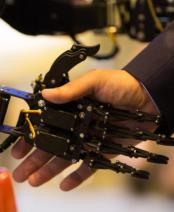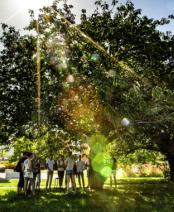Weak neutral currents, CERN's first major discovery 50 years ago
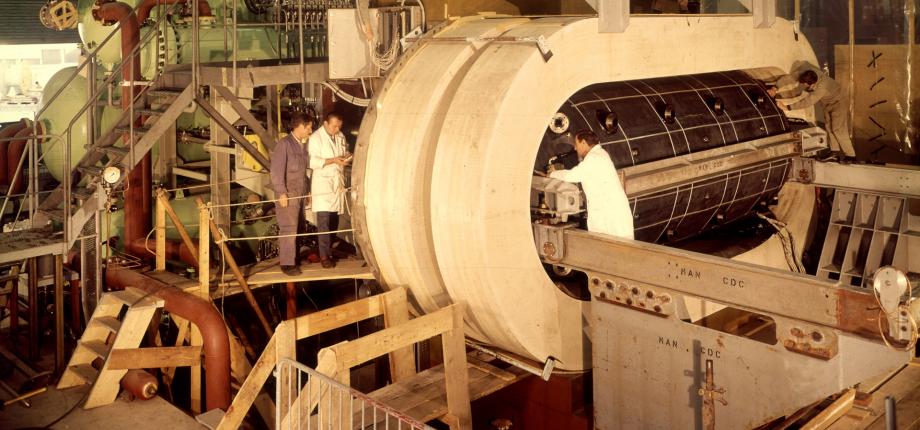
In the early 1960s, almost everything in particle physics remained to be done. While many new particles had already been discovered (muons, positrons, neutrinos, etc.), the theoretical framework governing all observed phenomena had yet to be constructed. In this context, at the Laboratoire de Louis Leprince-Ringuet (now LLR) at the Ecole Polytechnique, André Lagarrigue, André Rousset, Paul Musset and their colleagues initiated a number of experiments aimed at better understanding one of the fundamental forces that theorists were seeking to formalize: the weak interaction. One of these experiments, called the "Gargamelle", led to a major discovery whose 50th anniversary is being celebrated.
A discovery that was far from obvious
The weak interaction has a range far smaller than the dimensions of atomic nuclei. Scientists have been aware of it since the 1930s, as it accounts for beta radioactivity, when a neutron in a nucleus transforms into a proton, emitting an electron and another particle called an antineutrino. In the 1960s, theorists sought to understand the weak interaction in a similar way to the electromagnetic interaction. The latter works by exchanging an intermediate particle, the photon, which is electrically neutral. In beta radioactivity, there should be an exchange of an intermediate particle (or boson) with a positive or negative electric charge, depending on the case. But the question arises: could the weak interaction also manifest itself via a third, electrically neutral boson? If so, these "weak neutral currents" should be observed in particle physics experiments.
The course of major scientific discoveries is rarely a smooth one. Before neutrino beams were produced in particle accelerators, the possible existence of weak neutral currents could be tested by investigating various decay modes of so-called "strange" particles. However, all these results were clearly negative. "In the minds of theorists in the 1960s, neutral currents seemed impossible," recalls Bernard Degrange, then a young researcher at LLR. What's more, the first experiments carried out with neutrino beams didn't have enough data to draw any conclusions on the subject. Against this backdrop of uncertainty and scientific competition between Europe and the United States, André Lagarrigue and his colleagues had the "Gargamelle" experiment approved at CERN, the European particle physics research organization, in Geneva in 1965. But the search for weak neutral currents was not a priority in the proposal.
Gigantic detector, tiny effect
Like in the writings of François Rabelais, Gargamelle is a giant. Measuring almost 5 by 2 meters, this is the largest bubble chamber of its kind, i.e. a particle detector consisting of a closed cavity filled with a metastable liquid: the slightest disturbance - such as the passage of a charged particle - causes small bubbles to form, enabling the trajectory of the object to be tracked and photographed. Designed at École Polytechnique with LLR expertise, and built by CEA's Saturn department, Gargamelle was installed at CERN in 1970. Some fifty researchers from seven laboratories (in France, Germany, England, Italy, Belgium and CERN) took part in the adventure.
The principle of the experiment is to send an intense beam of neutrinos into the bubble chamber - several tens of billions per packet! While this number is huge, neutrinos have only a tiny probability of interacting (by weak interaction) with the protons, neutrons or even electrons of the liquid inside Gargamelle. If the interaction takes place in a "charged current", the neutrino will give rise to a charged particle (either a muon, the electron's more massive "cousin", or, more rarely, an electron). But there are events that catch researchers' attention: those that produce neither an electron nor a muon. Such an event would be observed, for example, if a neutrino interacted with a proton without changing its nature. This would be the signature of a "neutral current".
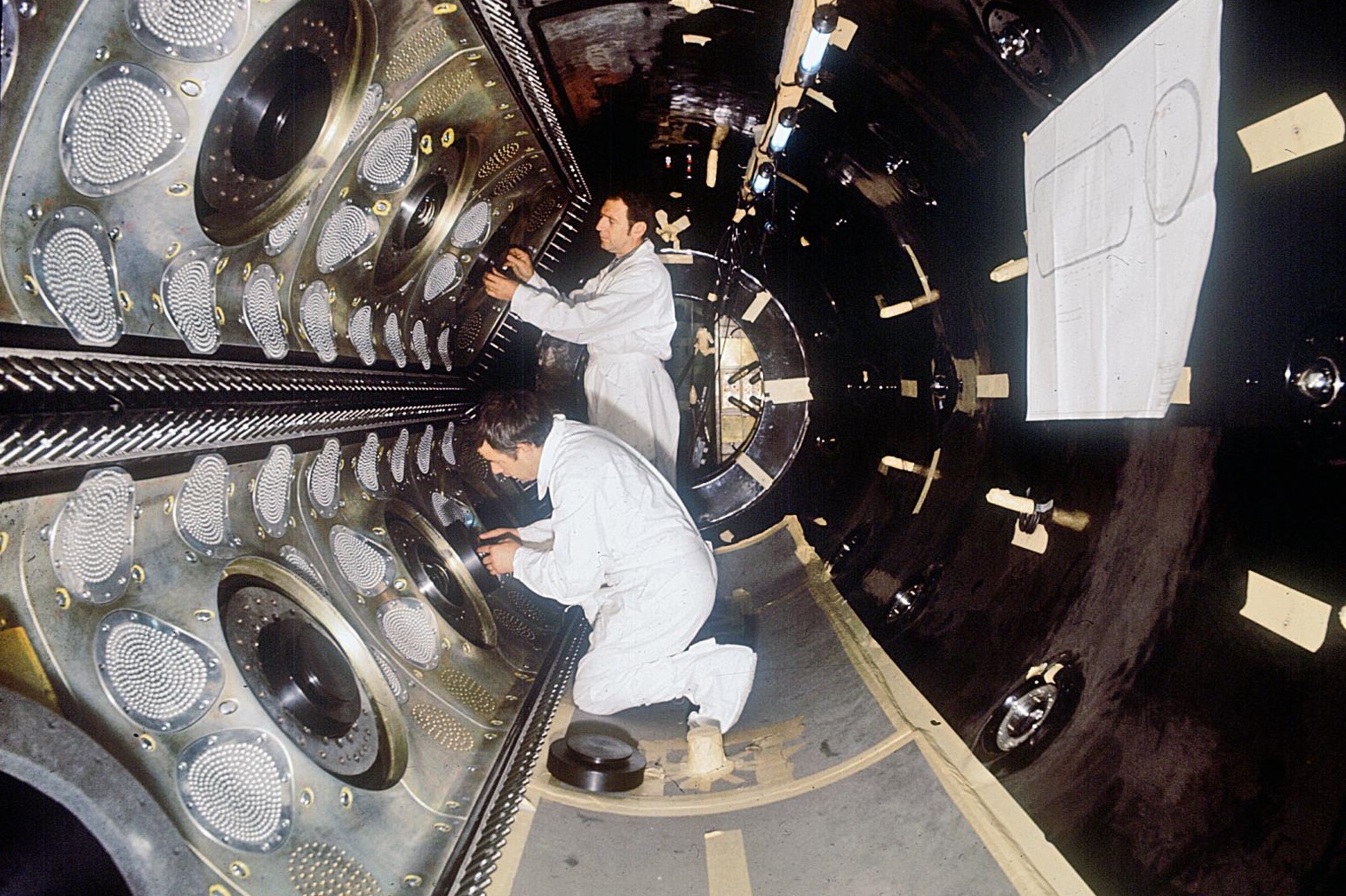
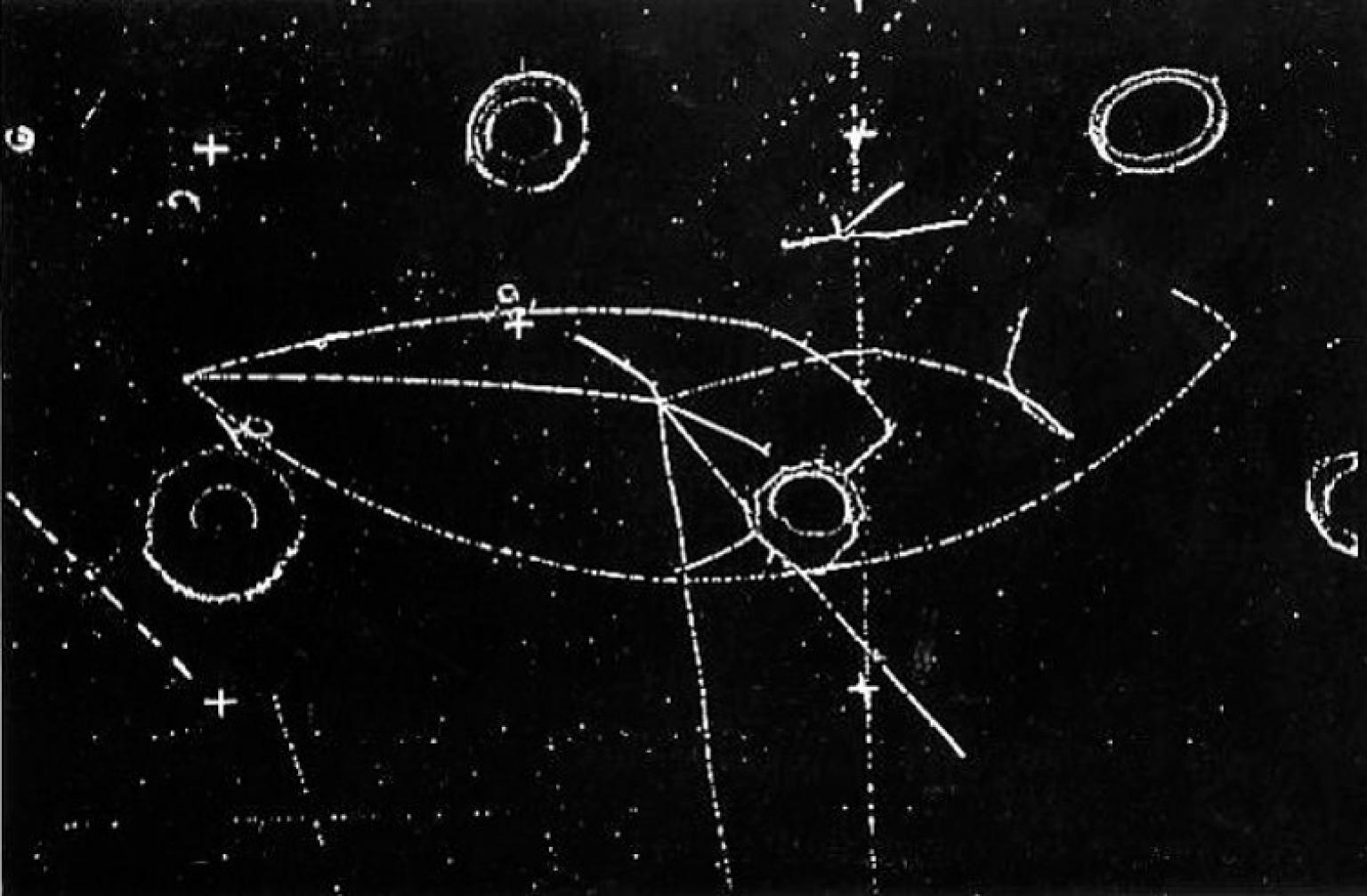
Caution and debate before definitive discovery
"Right from the start of the experiment in 1971, we spotted events that could be interpreted as neutral currents. But we had to be cautious, even though the mindset of theorists had begun to swing in favor of the existence of neutral currents", Bernard Degrange points out. Indeed, neutrinos interacting with materials outside the bubble chamber can produce neutrons which, penetrating the liquid, produce events similar to candidate "neutral currents" through strong nuclear interaction. Gargamelle's gigantism played a role here: its large dimensions, compared with the typical interaction lengths of neutrons in the liquid, made it possible to show that neutrons contributed to no more than 15% of "neutral current" candidates.
Following the announcement of the results in July 1973 and intense debate, especially with the rival HPW collaboration at the Fermi laboratory in the USA, the existence of neutral currents was confirmed in the spring of 1974 in other experiments. This discovery paved the way for numerous developments in particle physics, including the unification of the electromagnetic and weak forces within the same theoretical framework, and the direct discovery of the weak interaction bosons ten years later, also at CERN. Gargamelle was decommissioned in 1978, and the bubble chambers were replaced by electronic detectors. But many aspects of its history remain relevant to particle physics today: the international collective and intellectual adventure, the technical challenges of building detectors, the back-and-forth between theory and experiment, the debates on how to interpret results... This program continues today, following the discovery of the Higgs boson, and LLR continues to be at the forefront of these issues.












